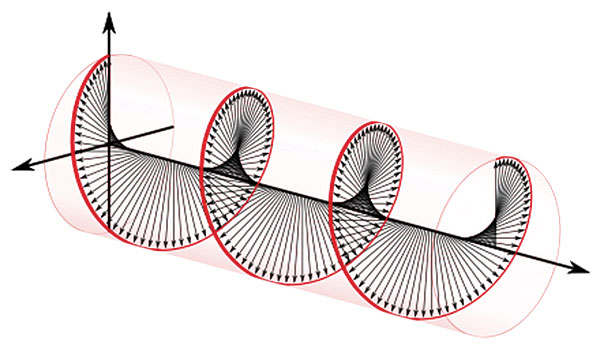I'm convinced from my own experience that Meta Quest has a simple and clear interface. Setting up the device takes a little time. The quality of the device is simply excellent, especially considering its affordable price. This is what other users say in meta quest reviews on this site. From these reviews, it is very easy to conclude that many people are satisfied with their product, and they do not regret their purchase.
A Passive 3D Approach Page 2
A Polarizing Discussion
All light is a form of electromagnetic radiation. As you might deduce from the name, it consists of electrical and magnetic fields. In most situations, these fields are random in nature, or unpolarized.
It’s possible to filter light so that it becomes linearly polarized, that is, so that its electrical field lies in a single plane. (The electrical and magnetic fields are typically at fixed angles to each other, but that relationship isn’t vital to this discussion.)
The device that produces linearly polarized light is called—surprise—a linear polarizing filter. Linear polarization has many applications, one of them being at least one type of theatrical 3D presentation: IMAX. The projected left- and right-eye images are polarized in different directions, and linearly polarized glasses block the image intended for the other eye. The two eyes see different images, but the brain combines them into a single 3D picture.

Another, more widely used form of polarization is used in RealD 3D theaters and in the passive 3D system under discussion here: circular polarization. To produce circularly polarized light, random light first passes through a linearly polarizing filter. Next, it passes through a second filter called a quarter wave plate. The quarter wave plate has a characteristic (known to rocket scientists as birefringence) that causes the light to travel through it at different speeds depending on the direction of its electrical field. Without getting into a complicated discussion of vectors, the result is that the previously linearly polarized light emerges from the quarter wave plate with a constant-magnitude electrical component that rotates either clockwise or counterclockwise (depending on the character- istics of the quarter wave plate). Since that wave is also moving forward, its path would look like a corkscrew if you could freeze it in time and see it (Figure 1).
Together with complementary circularly polarizing filters in the 3D glasses, this circularly polarized light can isolate the left- and right-eye images in the same way as linear polarization. One advantage of circular polarization is that it operates independently of the filters’ angular positions. In other words, it’s immune to the dimming or ghosting that linear polarizing filters produce when you tilt your head.
Sensing a Pattern
If you’ve glanced at the diagram on the previous page, you know that the left- and right-eye images emerge off the LCD panel with opposite, circular polarizations that a pair of passive, circularly polarized 3D glasses sort out at the viewer end.
But how does the LCD panel perform this polarization? To begin with, the two separate images that are required to produce the 3D effect are interleaved on the screen. Each image uses every other horizontal line of pixels. (That’s why each image has only half of HD’s full 1080 resolution.) A layer called a patterned retarder covers the entire front of the screen. It consists of 1,080 circular polarizing filters. Each filter is a single pixel high but extends the full width of the screen from left to right. Every other line of these filters—call them the A lines—produces clockwise circular polarization. Meanwhile, the B lines produce counterclockwise polarization. Since every other line is part of a different image, one for each eye, the two images emerge from the screen with opposite circular polarizations. The circularly polarizing filters in passive 3D glasses do the rest, ensuring that each eye sees only the images intended for it.
Manufacturing these filters and making sure that they line up correctly on the LCD panel requires exceptional precision. The filters for the VIZIO 3DTV reviewed on page 21 were produced on a glass substrate. The filters for most future passive set designs will be on a film, which is said to be lighter, thinner, and less expensive to produce.
- Log in or register to post comments
















































